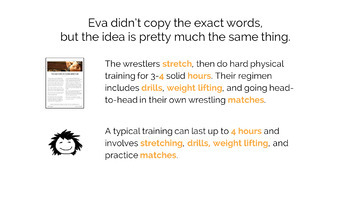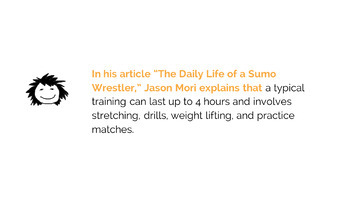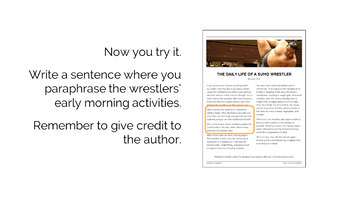Avoiding Plagiarism: A Mini-Unit
- Zip
What educators are saying
Description
FULLY UPDATED IN AUGUST 2023. The update now reflects APA 7 and MLA 9 styles!
___________________________________________________________________________
Most teachers have had to deal with plagiarism in some form or another, and many still haven’t quite figured out the best way to combat it. Some teachers give a stern warning and threaten serious consequences. Others use software to detect plagiarism.
These methods work to some extent, but many students plagiarize because they don’t always know when they’re doing it. Helping them develop a deep understanding of what plagiarism is, then showing them exactly how to avoid it, can stop it from happening in the first place.
The exercises in this mini-unit teach those skills: summarizing, paraphrasing, using direct quotes, and applying a formal citation style. Using 5 PowerPoint slideshows with accompanying printables, students are shown examples of each skill, then they practice the skill in small groups.
___________________________________________________________________________
THE EXERCISES
1. RECOGNIZING PLAGIARISM
This exercise uses the Concept Attainment strategy to help students wrap their minds around this hard-to-define idea. First, they read a sample article. Then they study examples of a student’s writing. In some cases, that student has plagiarized; at other times, he hasn’t. As students work to label which is which, they develop a better understanding of what plagiarism looks like.
2. SUMMARIZING
In this exercise, students practice summarizing a section of the same article from Exercise 1. Then they work in groups to make sure no one plagiarized, helping each other revise until each person’s summary is original.
3. PARAPHRASING
Here, students practice paraphrasing, which is a step closer to using an author’s actual words. They also choose from a list of sentence starters to elegantly give the author appropriate credit.
4. USING DIRECT QUOTES
This exercise is similar to the last one, except now students are using direct quotes from the article, rather than paraphrasing.
5. FORMAL CITATION
[Now reflects MLA 9 and APA 7 editions.]
In this exercise, students will first be shown a step-by-step breakdown of how a Works Cited (MLA) or reference list (APA) is built. Then they will write their own entries using information provided from two other sources.
Next, students practice creating in-text citations in the same style.
Finally, students will write their own simple essay in response to a prompt. The prompt asks students to explain a topic, support their points with at least two outside sources, and use both in-text citations and a Works Cited list (MLA) or reference list (APA).
___________________________________________________________________________
ITEMS INCLUDED IN THIS RESOURCE
Handouts
* two original source articles
* a guide to summarizing, paraphrasing and using direct quotes, with sentence starters
* style guides for APA 7 and MLA 9 citation style, covering citation for books, online articles, and YouTube videos
* a prompt, editable rubric, and sample for the writing task at the end of Exercise 5
Slideshows
Slideshows are provided for all five exercises: choose the PowerPoint files (works for Windows and Mac), or links to Google Slides presentations (see page 14 of the Teacher's Manual). Exercises 1-4 are grouped together in one slideshow, and Exercise 5 has its own. Exercise 5 has an APA version and an MLA version.
Teacher Manual
A 14-page teacher manual offers guidelines for the exercises, teaching tips for in-person and remote teaching, and information on standards alignment.
___________________________________________________________________________
Will this work for other age groups?
The target age for this mini-unit is grades 7-12, but it will also work well with college students. Although students in grades 3-5 may not be ready for the formal citation skills taught in Exercise 5, they could still benefit from exercises 1-4 with teacher support.
___________________________________________________________________________
What citation styles does this unit include?
This mini-unit teaches the basics of formal citation in APA 7 and MLA 9 styles. These lessons are completely separate, so you can teach whichever style your school prefers without confusing students.
Note that these styles are taught at an INTRODUCTORY LEVEL so that students can get the basics down before attempting more complicated variations. They cover citation for three basic types of sources — books, online articles, and online videos — and they only teach how to create a reference list (or Works Cited list) and how to create in-text citations.
___________________________________________________________________________
Are you teaching argumentative writing?
Check out my Argumentative Writing Unit for grades 7-12.
___________________________________________________________________________





